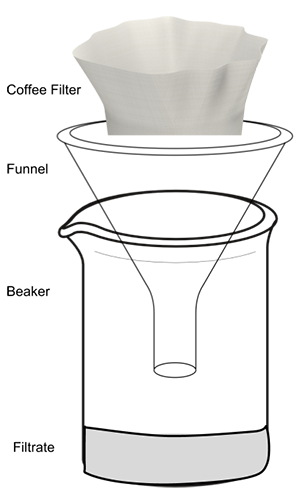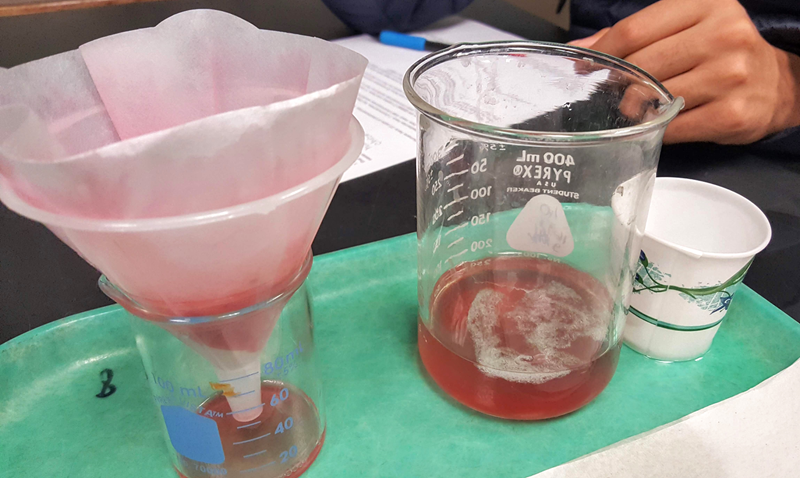Investigation: What Plants have DNA?
(Intro Bio and Life Science)
In this activity, you will attempt to extract DNA from several types of plants. Your teacher will provide you with samples of plants, like bananas, kiwis, and strawberries where you will follow steps to extract the DNA.
Prediction: Do you think some of the plants will have more DNA than others? Why or why not?

Materials Needed:
- DNA Extraction Buffer:1000 ml of deionized water, 50 ml of clear dish detergent, 1 teaspoon of salt
- Strawberry, kiwi, banana, peas, and other fruits or vegetables
- Ziploc bag, Coffee filters and funnels
- Beakers, or cups to collect filtrate
- Ethanol or 91% isopropyl alcohol (chilled)
Procedure: The procedure is the same for each sample, but you only have time to do one extraction. Your teacher will assign you one type of fruit or vegetable.
1. Add a strawberry or other sample to a Ziploc storage bag.
2. Add 10 ml of the DNA extraction buffer and mash the strawberry and buffer for about one minute.
3. Place a funnel in a beaker and a coffee filter in the funnel.
4. Carefully open the bag with your sample and pour it into the filter.
5. Fluid will slowly drip into the beaker, but this step takes a while. The fluid in the beaker is called the filtrate and it may contain DNA.
**While you wait, answer questions #1-3**
6. Tilt the beaker so that you can slowly pour cold alcohol over the top of the filtrate in a single layer. DO NOT MIX.
7. White strands will form in the alcohol layer, use a stirring rod or toothpick to spool the strands.
Discussion
1. Strawberries are octoploid, which means that have 8 copies of each chromosome. Remember that humans are diploid, we have two copies of each chromosome.
Do you think it would be easier to extract the DNA from a strawberry or from a human?
Explain your choice.
2. Humans have 23 pairs of chromosomes, for a total of 46.
Strawberries have 7 chromosomes, but they are octoploid.
How many total chromosomes would you find in a cell of a strawberry? _______Some Bananas are triploid (3 copies) and have 11 individual chromosomes.
How many total chromosomes would you find in a cell of a banana? ______Kiwifruit are hexaploid (6 copies) and have 29 individual chromosomes.
How many total chromosomes would you find in a cell of a kiwi? ________
3. When you mashed your sample, you may notice that some bags have more fluid than others, particularly if they had a larger fruit sample in the bag. The amount of fluid in a sample is called the VOLUME.
How might the volume of the sample affect the amount of DNA that you can collect?
4. Describe the appearance of the DNA in your sample.
5. Compare your sample to other groups in the room. Now you can answer the experimental question. Do some groups appear to have more DNA than others?
Suggest at least one reason why these differences might be observed. (Hint, consider the questions on this page.)

Other Resources on DNA
DNA Investigation with Strawberries (basic) - simplified version of DNA extraction lab for intro level, with minimal equipment
Strawberry DNA Extraction (Bio 1) - instructions for extracting DNA from a strawberry, very simple, works every time!
Coloring DNA - basic image of DNA and RNA for students to color following directions; includes questions and analysis
DNA Crossword - puzzle to practice basic terms related to DNA


